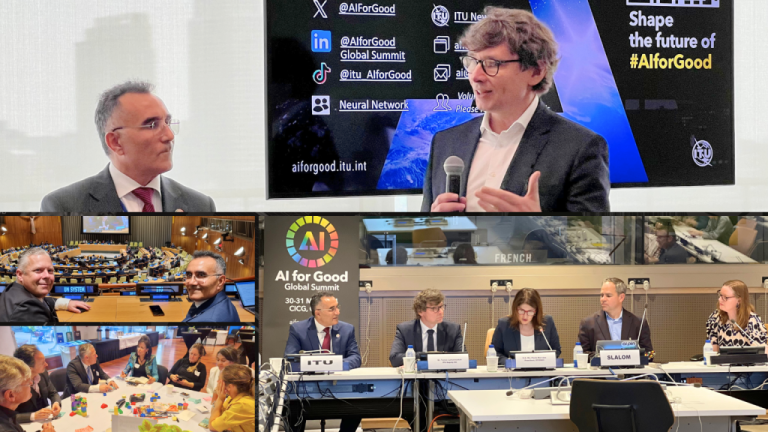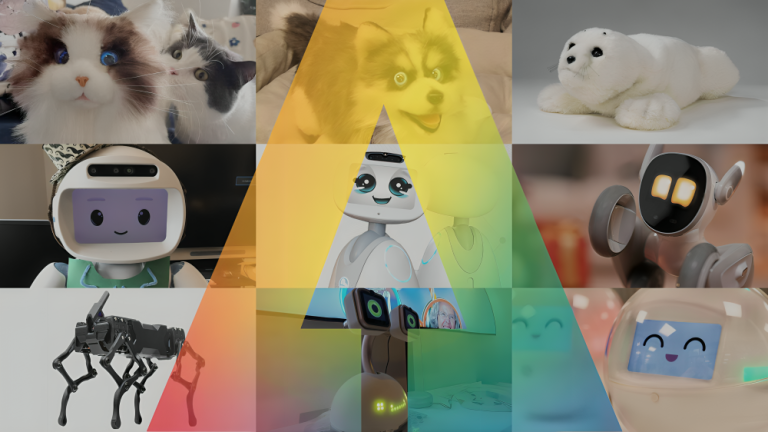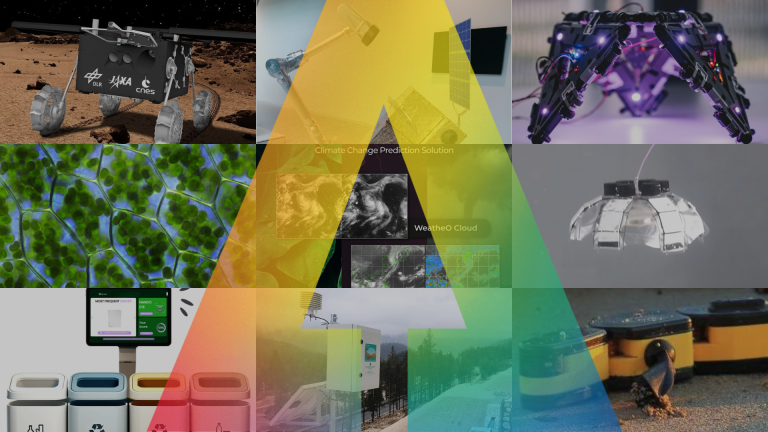Revolutionizing Digital Accessibility: Key Takeaways from “Accessible Europe: ICT 4 ALL” on AI Innovations
Last week, Madrid, Spain, hosted the Regional Forum for Europe, “Accessible Europe: ICT 4 ALL.” This vibrant event brought together a multitude of voices and perspectives, focusing on the critical intersection of artificial intelligence (AI) and digital accessibility. Organized by the International Telecommunication Union (ITU) and the European Commission (EC), the forum served as a dynamic platform for experts to delve into AI’s transformative potential in improving the lives of individuals with disabilities.
The session titled “AI and Emerging Technologies for Digital Accessibility” was moderated by Guillem Martínez Roura, AI and Robotics Programme Officer at the ITU. This engaging panel featured leading experts from various organizations, including Fundación ONCE, the European Disability Forum, SignAvatar, Fundación Descúbreme, the University of Lisbon, the International Federation of Hard Hearing Young People, and the Polytechnic University of Madrid.
“As we navigate the ever-evolving digital landscape, recognizing that inclusivity is not merely optional but essential for a truly equitable digital society is crucial. AI emerges as a powerful ally, holding immense promise in bridging the accessibility gap and empowering individuals with disabilities to participate fully in the digital realm,” remarked Guillem Martínez Roura.
### Bridging Accessibility Gaps and Empowering Individuals with Disabilities
Almudena Alcaide and her team at Fundación ONCE are at the forefront of pioneering initiatives aimed at bridging the accessibility divide. Their innovative projects, specifically “Access Meet” and “Access Robots,” exemplify the potential of ethical AI in fostering empowerment. The cutting-edge “Access Meet” video conferencing tool integrates algorithms for speech-to-text, vision computing, and audio descriptions, ensuring inclusivity during conferences and training sessions. Meanwhile, “Access Robots,” a fleet of intelligent robotic assistants, aids navigation in expansive environments, significantly enhancing autonomy for individuals with disabilities. These initiatives highlight the transformative capabilities of AI in promoting inclusivity and empowerment.
### Exploring AI’s Benefits and Challenges for Disability Accessibility
Daniel Casas from the European Disability Forum articulated the vast potential of technology, particularly AI, in empowering the disability community. While acknowledging that international conventions advocate for technology access as a fundamental human right, he also emphasized the limitations of AI. It can’t single-handedly resolve all accessibility issues; rather, it’s a piece of a broader puzzle that also requires changing societal attitudes towards accessibility. He pointed out that while AI often aims to improve efficiency, it can sometimes lead to underfunding and a lack of specialized expertise needed to tailor AI solutions for individuals with disabilities.
“There needs to be a change in mindset regarding how accessibility should be viewed as a continual process in product or service design,” added Daniel Casas.
### Incorporating Disability Advocacy: A Pathway to Inclusive AI Technologies and Policy
For technology solutions to be genuinely inclusive, accessibility must be a fundamental consideration from the outset. Collaboration with individuals and advocacy groups for persons with disabilities is essential to ensure their perspectives are represented and that comprehensive testing methodologies are developed. Setting robust standards and regulations that guide the market towards inclusive designs, while aligning with established accessibility standards like WCAG, is critical. Additionally, active involvement of disability advocacy groups in policy forums is crucial to steer policy directions towards inclusivity. Robust testing, effective feedback systems, and ongoing education are vital for nurturing technology environments that genuinely cater to individuals with disabilities.
“If we go beyond policy and legislation, it’s essential to guarantee that testing is inclusive and involves those we aim to include,” emphasized María Ignacia Rodriguez Espinoza, Head of Public and International Affairs at Fundación Descúbreme and a Partner at Zero Project.
### AI’s Role in Enhancing Human Experience and Mitigating Risks
AI promises to augment rather than replace human capabilities across various sectors, particularly in healthcare and accessibility for individuals with hearing impairments. AI-driven solutions such as speech-to-text technologies and real-time captioning integrated into platforms like Zoom and Google Meet significantly enhance communication. This inclusivity fosters a more accessible environment in settings where traditional captioning may pose challenges. Furthermore, AI’s adaptability allows for personalized user experiences, especially within educational platforms that offer customized learning features to cater to diverse learning needs, including those of students with disabilities.
“A major challenge is ensuring accessibility that accommodates the diverse experiences of all users,” stated Paulina Lewandowska, Secretary at the International Federation of Hard Hearing Young People.
Moreover, AI-powered assistive listening devices such as hearing aids can be personalized to amplify specific sounds while reducing background noise, offering a more tailored auditory experience. Despite these advancements, there are obstacles to overcome, such as accuracy limitations, particularly in less common languages, necessitating continuous development to ensure a seamless experience across all levels of hearing loss.
The journey of artificial intelligence in crafting inclusive solutions, especially in child development and accessibility, began in the mid-90s with the development of information systems that monitored children’s growth using comprehensive data. As AI technology has become more accessible, it has enabled tailored advice on accessible toys, helping children with disabilities engage and learn. Smart toys have also emerged, equipped with AI to assess interaction patterns and identify accessibility barriers proactively, which is crucial in the early detection of neurodevelopmental disorders. This target approach uses AI to personalize accessibility, continuously adapting to individuals’ unique needs, ensuring their rights to participate in an inclusive environment.
“AI discreetly enhances our interactions, tailoring accessibility for diverse needs and ensuring equitable participation,” observed Miguel Ángel Valero Duboy, a Professor at the Polytechnic University of Madrid.
Mainstream AI applications pose a risk of unintentionally creating new barriers, underscoring the urgent need for inclusive design practices across all technological sectors. It’s vital to adopt a balanced approach, acknowledging that while digital solutions offer remarkable efficiency, they may not wholly replace the significance of physical interaction for some individuals. This complexity requires a nuanced strategy to maximize AI’s advantages while addressing potential pitfalls in the journey towards enhancing accessibility for individuals with disabilities.
“We often joked about AI being the solution. In reality, we need to recognize that AI won’t solve everything, and we must be careful not to repeat past mistakes we encountered with web and mobile applications,” reminded Carlos Duarte, an Associate Professor at the University of Lisbon.






